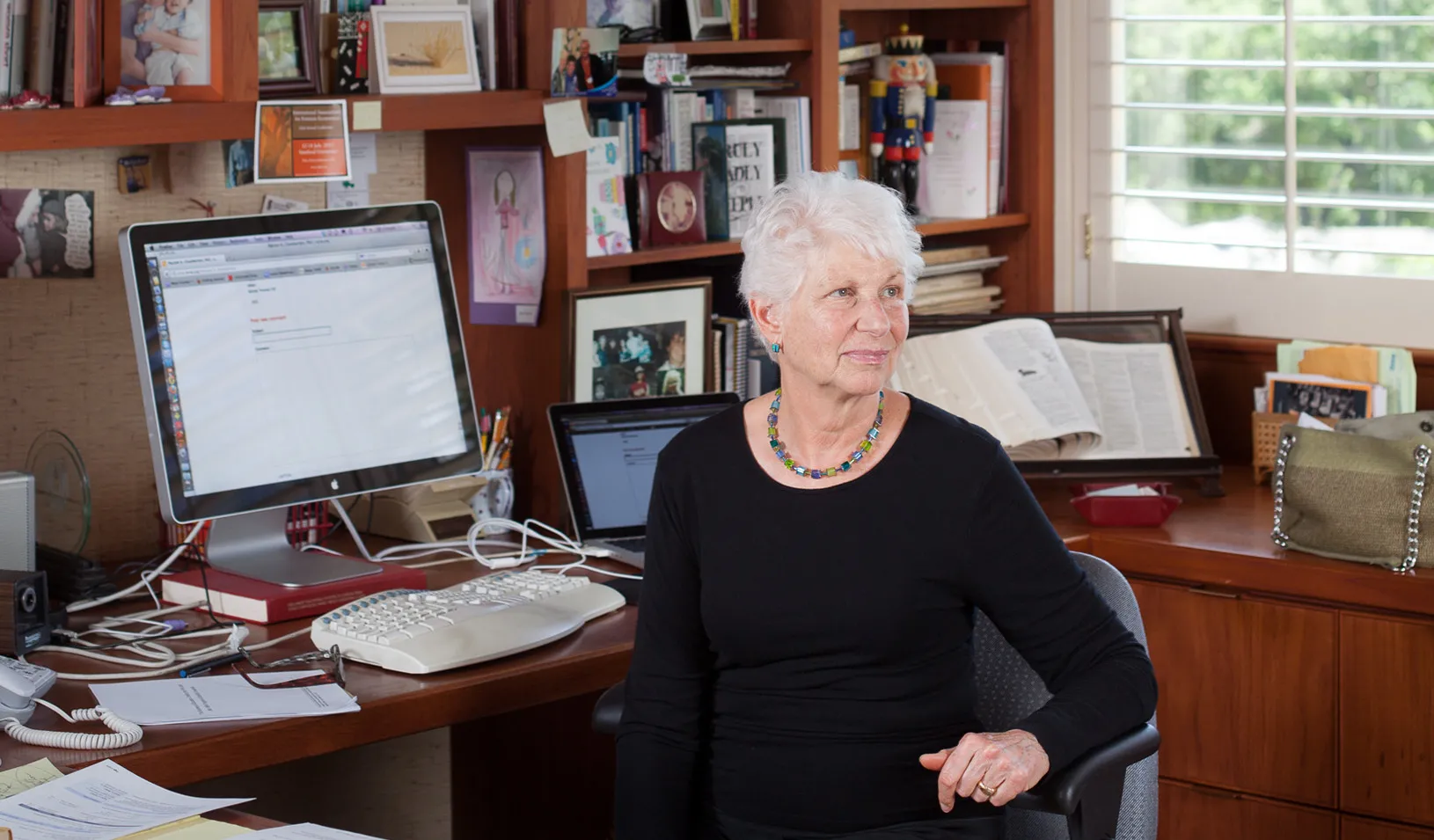Myra Strober: How the Workplace Works — or Doesn't — for Families
We've made progress, says the economist, but the system and potential role models still sometimes fail us.
May 31, 2013

Myra Strober (Photo by Damien Maloney)
One of the first female faculty members at Stanford Graduate School of Business, labor economist Myra Strober focused attention on gender issues in the workplace and the economics of child care — subjects that still confound families and spark impassioned debate. A professor of education as well as economics, she began teaching Work and Family — then titled Women and Work — in 1972. In 1974, she became the founding director of Stanford University’s Center for Research on Women, which is now known as the Clayman Institute for Gender Research. She retired last year after 40 years, receiving a standing ovation at her last lecture. Strober recently spoke with us about what has changed in the workplace, and what hasn’t.
What, if anything, is new for women trying to balance work and family today?
The availability of child care is a big change. There was no such thing as a child care center when I was starting out. Either you had a family member you could call on, or you had to hire somebody. I didn’t even know the term “nanny” when I was looking for someone to care for my child.
The other big change is social norms. When I first had my child, I was unusual. There were only two other women on the block who worked; one was a single mom and the other was a physician. Otherwise, women stayed home. Now if you’re a working mom, unless you live in an extremely wealthy community, you’re the norm. The norm has also changed with regard to dads. They’re supposed to diaper babies, take care of young children, do housework. This was not the case when I first had my children.
How are these changes reflected in the workplace?
When I had my child, there was no such thing as maternity leave, let alone paternity leave. The workplace now is familiar with new moms and new dads and makes provisions for that. Your job is held for you for some period of time.
Now, we certainly don’t have the kind of parental leave they have in Europe or other industrialized countries, but there are employee benefits that can be used. I don’t want to say that things are where they should be, because I think we could do a lot better. But they’re certainly improved.
Sheryl Sandberg’s book, Lean In, is a best-seller. What did you think of it?
I’m so happy she wrote it! We need to keep bringing this topic up. You can’t make progress here unless women do the kinds of things Sheryl suggests, and work organizations support them. The students I see start off very much leaning in, and they work for a while but then they have a child — or more often, a second child — and the workplace is not supportive, so they give up.
So despite improved child care and changes in social norms, it’s still too hard for many to pull it off.
Most women stay in the workplace because their families need two incomes — unless there’s so much money coming in that it’s possible for one person to leave. We know that a lot of women with MBAs do leave the workforce after they become moms.
But that’s a very small percentage of women, those who can afford to quit.
It is a small percentage. The problem is that the very women who are leaving are the ones who could move up and be role models for everybody else. For a mom of young children, the decision to stay in the workforce or leave has to be personal, and I am really opposed to anybody judging those decisions. But even though it’s an individual decision, it has enormous societal repercussion. If you are a highly trained, highly educated woman and you leave, then you don’t provide a role model for other women. And you provide those people [in the workplace] who don’t want women to succeed with a negative role model and a mindset that says, “Well, next time I’m not going to be so supportive because look what happens!”
What’s the solution?
There needs to be a more flexible attitude for dads and moms in the workplace and a sense in society that young parents need to be supported. Schools shouldn’t be able to just set vacations for any time they want. Schools need to recognize that not only are they educating young children, they’re also making it possible for parents to work. Maybe we need summer programs, and funds for parents to take paid leave before their child goes to child care at, say, six months. Without paternity and maternity leave, very few parents can do that.
Is there an underlying insecurity or fear among men that drives any of this?
I used to see a lot more of that than I do now, especially among young men. But a lot of young men today have had working moms, so that changes things. And a lot of older men see their own daughters and sons in marriages where there’s more equality, and they see their own grandchildren in child care.
I think the views on this have really changed. Often when I have men in my class from countries where there’s been less change than here, they remind me of some of my male students in the 1970s who stood up and said they didn’t want to take macroeconomics from me. It’s also interesting that when I have men in my class from European countries, they can’t believe we don’t have paid maternity and paternity care.
What are today’s female MBA candidates like?
They’re fabulous. They’re so thoughtful about these issues. They want so much to make the right decisions. It’s interesting: When I ask them if they want to marry a man who is willing to be the primary parent — because a lot of these women are extremely ambitious — rarely do I find a woman who says, “Yes.” They want an equal relationship at home, and they want both themselves and their husbands to be successful financially. And some of them still want their husbands to be more successful than they are.
Some of them are very optimistic that they can both be an engaged parent and have a satisfying career — especially those who have seen their own mothers do it. The African American women are very sure that they can do it because they’ve seen so many women from their own community do it. The women whose moms were stay-at-home moms, and whose older sisters are stay-at-home moms, are worried. They don’t see how they’re going to be as excellent at being a mother if they also have a demanding career.
What one bit of advice would you give women leaving your class?
I always tell them: “You can do this. If you want to have a family, you can also be a very successful woman in the workplace.” One of the key decisions is who you marry. And I have to say, every year I get emails from students who say, “One of the results of your class is that I broke up with the man I was seeing.” And I always write back and say: “I’m sure it’s very sad. But better to find out now.”
Do you feel disappointed when students tell you they’re leaving the workforce?
I do, but not in them. I feel disappointed that the system is such that they can’t make it work.
What other kinds of work arrangements should we be exploring? Part-time?
Part-time doesn’t usually work out very well, unless it’s temporary and unless it’s with the employer that you’ve been with for a while. I think we have to experiment more with job-sharing and work-at-home days, but it’s very counterproductive if only women do it.
Laura Carstensen, a colleague of mine, has written a great book [A Long Bright Future] about the fact that we’re all living so much longer, and yet our societal structures haven’t changed. We’re still cramming education into the first few years, and then we’re saying everybody has to work hard, and then at some age retire. And so now you have a lot of leisure at age 70, when you really needed that leisure at 35. Why don’t we create new structures where people work less than 40 hours a week when they have kids, and then let older people work part-time until they’re 75 or 80?
That would help solve the Social Security problem, too.
Indeed. We’re kind of stuck in the old arrangements, and we haven’t had a lot of good thinking about the new arrangements. That’s partly because we’re so involved in the economic downturn, and the sequester and immigration and whatever else, we’re not thinking about these even larger problems.
I imagine that if you and I were talking 100 years from now, the situation would be quite different. The world is changing so fast that it doesn’t make sense to cram everybody’s education into the first 20 years. Jobs are changing all the time, people are living longer, and so we have to change all our structures. And I think we will.
I wish we could meet in 100 years and celebrate.
Maybe we’ll look down from above and have a toast.
Myra Strober is a professor emerita at the School of Education at Stanford University. She was also professor (by courtesy) at Stanford GSB until her retirement in 2012.
For media inquiries, visit the Newsroom.
Explore More

Love & Money: How to Talk About Big Decisions Together

It’s Time to Prioritize Humane Workplaces — Even If It Means Less Productivity



